
The Divine Comedy is an Italian narrative poem by Dante Alighieri, begun c. 1308 and completed around 1321, shortly before the author's death. It is widely considered the pre-eminent work in Italian literature and one of the greatest works of Western literature. The poem's imaginative vision of the afterlife is representative of the medieval worldview as it existed in the Western Church by the 14th century. It helped establish the Tuscan language, in which it is written, as the standardized Italian language. It is divided into three parts: Inferno, Purgatorio, and Paradiso.

Purgatorio is the second part of Dante's Divine Comedy, following the Inferno and preceding the Paradiso. The poem was written in the early 14th century. It is an allegory telling of the climb of Dante up the Mount of Purgatory, guided by the Roman poet Virgil—except for the last four cantos, at which point Beatrice takes over as Dante's guide. Allegorically, Purgatorio represents the penitent Christian life. In describing the climb Dante discusses the nature of sin, examples of vice and virtue, as well as moral issues in politics and in the Church. The poem posits the theory that all sins arise from love—either perverted love directed towards others' harm, or deficient love, or the disordered or excessive love of good things.
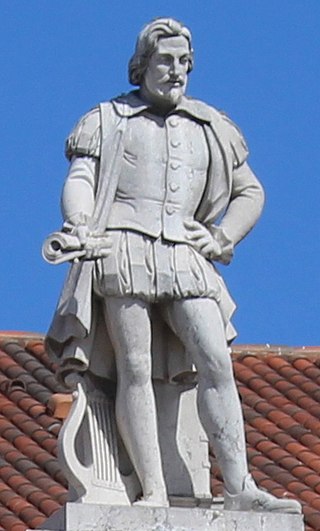
Gil Vicente, called the Trobadour, was a Portuguese playwright and poet who acted in and directed his own plays. Considered the chief dramatist of Portugal he is sometimes called the "Portuguese Plautus," often referred to as the "Father of Portuguese drama" and as one of Western literature's greatest playwrights. Also noted as a lyric poet, Vicente worked in Spanish as much as he worked in Portuguese and is thus, with Juan del Encina, considered joint-father of Spanish drama.
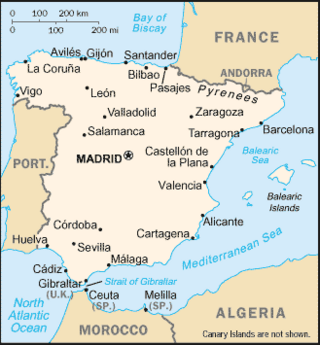
Autos sacramentales are a form of dramatic literature which is unique to Spain and Hispanic America, though in some respects similar in character to the old Morality plays of England.

Vítor Norte is a Portuguese actor. He won the Portuguese Golden Globe award for best actor three times.

The Devil, appears frequently as a character in literature and various other media, beginning in the 6th century when the Council of Constantinople officially recognized Satan as part of their belief system. In Abrahamic religions, the figure of the Devil, Satan personifies evil. In music, the Devil is referenced in most music genres. Connecting the devil to certain music can be used to associate the music with immorality, either by critics or by the musicians themselves. In television and film, the Devil has a long history of being used and often appears as an extremely powerful, purely evil, antagonist. He also may appear working behind the scenes, in disguise, or in secrecy to influence a story in the forefront. In narrative works, the Devil is often associated with concepts such as the Antichrist, Hell and the afterlife, and the apocalypse. Especially in media from the early 1900s, creators might have been compelled to portray the Devil with another name or in a non-classical fashion to skirt censorship laws that discouraged showing the Devil as a character. Occasionally the Devil appears not as an entity but rather is used as a name for something that is very sinister or malevolent in a narrative such that the characters feel it is the Devil.

In religion and folklore, hell is a location or state in the afterlife in which souls are subjected to punitive suffering, most often through torture, as punishment after death. Religions with a linear divine history often depict hells as eternal destinations, the biggest examples of which are Christianity and Islam, whereas religions with reincarnation usually depict a hell as an intermediary period between incarnations, as is the case in the Indian religions. Religions typically locate hell in another dimension or under Earth's surface. Other afterlife destinations include heaven, paradise, purgatory, limbo, and the underworld.

In Christian theology, Hell is the place or state into which, by God's definitive judgment, unrepentant sinners pass in the general judgment, or, as some Christians believe, immediately after death. Its character is inferred from teaching in the biblical texts, some of which, interpreted literally, have given rise to the popular idea of Hell. Theologians today generally see Hell as the logical consequence of rejecting union with God and with God's justice and mercy.
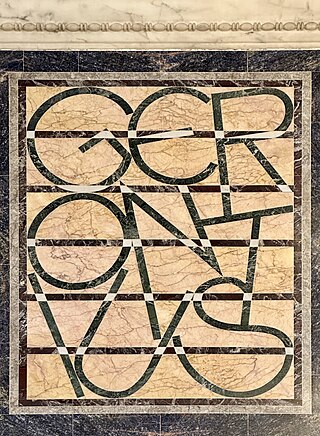
The Dream of Gerontius is an 1865 poem written by John Henry Newman, consisting of the prayer of a dying man, and angelic and demonic responses. The poem, written after Newman's conversion from Anglicanism to Roman Catholicism, explores his new Catholic-held beliefs of the journey from death through Purgatory, thence to Paradise, and to God. The poem follows the main character as he nears death and reawakens as a soul, preparing for judgment, following one of the most important events any human can experience: death.
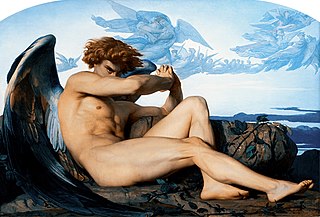
In Christianity, the Devil is the personification of evil. He is traditionally held to have rebelled against God in an attempt to become equal to God himself. He is said to be a fallen angel, who was expelled from Heaven at the beginning of time, before God created the material world, and is in constant opposition to God. The devil is conjectured to be several other figures in the Bible including the serpent in the Garden of Eden, Lucifer, Satan, the tempter of the Gospels, Leviathan, and the dragon in the Book of Revelation.

The Divine Comedy has been a source of inspiration for artists, musicians, and authors since its appearance in the late 13th and early 14th centuries. Works are included here if they have been described by scholars as relating substantially in their structure or content to the Divine Comedy.
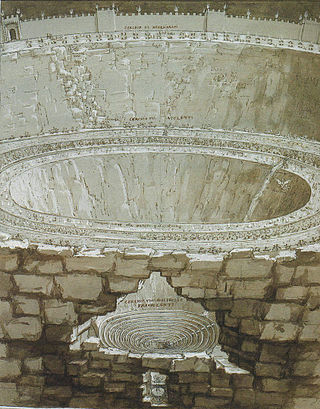
In Dante Alighieri's The Divine Comedy, the City of Dis encompasses the sixth through the ninth circles of Hell.

Inferno is the first part of Italian writer Dante Alighieri's 14th-century narrative poem The Divine Comedy, followed by Purgatorio and Paradiso. The Inferno describes the journey of a fictionalised version of Dante himself through Hell, guided by the ancient Roman poet Virgil. In the poem, Hell is depicted as nine concentric circles of torment located within the Earth; it is the "realm [...] of those who have rejected spiritual values by yielding to bestial appetites or violence, or by perverting their human intellect to fraud or malice against their fellowmen". As an allegory, the Divine Comedy represents the journey of the soul toward God, with the Inferno describing the recognition and rejection of sin.
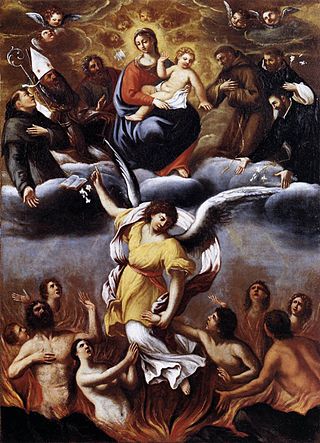
Purgatory is a passing intermediate state after physical death for purifying or purging a soul. A common analogy is dross being removed from gold in a furnace.

Bonconte I da Montefeltro was an Italian Ghibelline general. He led Ghibelline forces in several engagements until his battlefield death. Dante Alighieri featured Montefeltro as a character in the Divine Comedy.

The first circle of hell is depicted in Dante Alighieri's 14th-century poem Inferno, the first part of the Divine Comedy. Inferno tells the story of Dante's journey through a vision of hell ordered into nine circles corresponding to classifications of sin. The first circle is Limbo, the space reserved for those souls who died before baptism and for those who hail from non-Christian cultures. They live eternally in a castle set on a verdant landscape, but forever removed from heaven.

The second circle of hell is depicted in Dante Alighieri's 14th-century poem Inferno, the first part of the Divine Comedy. Inferno tells the story of Dante's journey through a vision of the Christian hell ordered into nine circles corresponding to classifications of sin; the second circle represents the sin of lust, where the lustful are punished by being buffeted within an endless tempest.
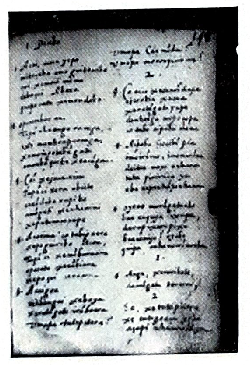
In the Village of Guaraparim is the title given to the longest play by Joseph of Anchieta, canonized in 2014, written exclusively in the Tupi language, a now dead language.


















